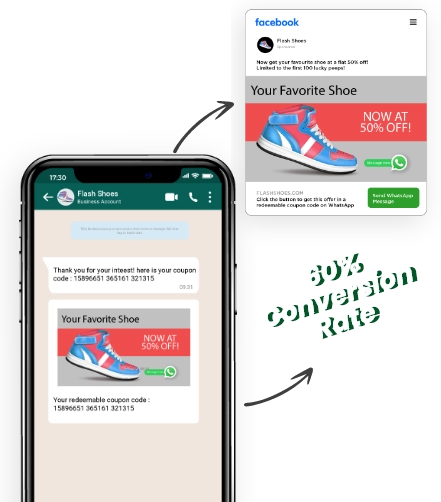“The Tuesday delivery was late and arrived on Thursday. What really is happening? Can you explain!!”
Does this ring a bell? Do you hear such things on a daily or weekly basis? How to handle a customer complaint? Customer complaints in any business have a place to stay. At times, business owners tend to get tired of them and stop paying attention. If you are doing so, change your habits immediately. Complaints are important. They come from clients who are attempting to support your company.
How and why?
Your organization depends on its customers to succeed. Customer service is incredibly essential since, without their support, your company won’t expand. Thanks to the web and social media, consumers are more outspoken than ever about their interactions with companies, whether they are positive or negative.
The truth is that those who give you bad feedback frequently:
- Need to rant because they were unhappy with a function or a product.
- They felt they needed to express their dissatisfaction with your service since they had great expectations for it.
How can you keep customers happy?
It’s a very easy thing to take complaints seriously, especially for business owners who are frequently intensely focused on improving their offerings.
The greatest approach to handling customer complaints is to remember that you and the consumer are on the same page. even if the client isn’t aware of it yet. You’re headed in the right direction if you add a dash of personalization!
A frustrated customer may wish to express their annoyance. Naturally, you should never put up with inappropriate behavior, but if a client confides in you about how dissatisfied they are, you might want to pay heed to them and demonstrate that you care. Answering with brief expressions like “Tell me a little more about it” or “I realize and understand” will help you achieve this.
7 customer complaints handling procedures
Countless studies have shown that it costs five times as much to get a new customer as it does to keep an existing one. Each satisfied client also serves as an amazing resource for testimonials, insightful criticism, and even new recommendations.
How can you then ensure that every consumer is content? Are you worried with the thought “how to handle a customer complaint?”. The good news is, you can begin by considering the following 7 customer complaints handling procedures:
1. Use Social Media to Engage with them.
Social media has significantly changed how consumers and companies engage. Nevertheless, you can’t expect to build a long-lasting relationship with your customers if all you post are advertisements and sales pitches.
It’s crucial to interact with your visitors by sharing relevant, interesting, or useful content. You can upload or post content like photographs, movies, surveys, and more to keep people involved. People favor following businesses with personalities who post content from a human standpoint as opposed to only from a business point of view.

You can engage with your customers in a variety of ways on social networking sites, including the following:
- Respond right away to any postings and remarks, whether it is good or bad.
- Share the tags and images that your users have posted.
- Like postings that mention your business.
- Run promotions, lucky draws, and contests.
- Post entertaining, amusing, and educational information.
2. Know your Customers Better.

What could be more crucial than gaining a new client? Keeping them loyal to your brand. Personalization is the secret to retaining your customers’ satisfaction and loyalty. Make it a goal to learn more about your consumers, including their interests, birthdays, tastes, and purchasing patterns. By tailoring your service, take advantage of this knowledge. On their birthdays, you can give them a card as well as a discount coupon. You can also ask them how their day was or their weekend when they first enter your business. Why so? Well, they deserve to feel exceptional and know how much they mean to your brand. Isn’t it one of the best approaches to handle a customer complaint?
3. Listen and Take a note
You aren’t taking advantage of all the opportunities to keep your consumers satisfied if you aren’t regularly seeking their feedback. Make inquiries directly, through your customer service representatives, or through instant messaging. Pay close attention to the answers. If you do this, you will frequently get advice from experts on how to maintain customer satisfaction.

You should listen to your customer’s true voice. Use a poll, direct email, or other methods to find out how your consumers feel and ask for comments. What inconveniences did they have? What were the detests? By doing so you will have the chance to adapt to each of these responses and work on it.
4. Be Innovative
Several businesses do not give their customers’ satisfaction any thought. They reason that it is sufficient that we offer the customer a solution. However, someone else will eventually enter the picture and profit from your shortcomings. They will produce a better consumer experience than you do. The outcome? They take market share from you, which finally forces you out of business.
You must focus on developing a new approach if you want to be the game changer rather than the affected. So how do you get your business up and running? Review or assess your existing customer experience in detail. Consider highlighting things like: Is my product simple to use? Is it simple to order my goods or services? What are the present challenges for my consumers? How can I go the extra mile to make it simpler? Ultimately, topping your client’s expectations is more important than simply achieving them.
5. Offer Exceptional Customer Support
The customer support experience runs beyond your website and purchase procedure. Not just that, you also need simple, structured, and welcoming customer service to keep your consumers pleased. To obtain information or carry out online tasks, people don’t want to call customer care. Instead, automation is perceived as a show of expertise, which is positive for your brand.

If they have to pick up the phone and call, people feel as though they are being bothered. However, if customers must speak with a representative, it must be as comfortable as possible. There is no waiting, courteous assistance, or simple fixes: that is how to maintain happy consumers.
Easily Connect with your Customers
6. Get special deals available.
You should provide your customers with something additional if you want them to be truly satisfied. Anything that will add value and enable them to make a small save.
Occasionally, it can be a good idea to run special promotions for your existing clients, for instance, Black Friday specials, Christmas gifts, and birthday freebies. Offers themselves can range from regular reductions to free deliveries to extra goodies.

This strategy is particularly helpful for bringing in new clients, but it can also boost client engagement and commitment. Ways to offer special deals:
- Direct discounts: The most obvious promotion strategy is giving discounts to your consumers. Companies can also provide discounts for additional purchases or account upgrades.
- Upgrades: It might be a good idea to give your dedicated clients some free account upgrades if you run a SaaS company. This promotion is excellent for handling unhappy clients.
- One-for-two strategy: This is simple. You receive a free item when you purchase one.
- Free delivery: Just keep in mind that free shipping is only worthwhile as a promotion if your typical order volume covers the cost.
7. Regulate referrals.
It’s appropriate to take advantage of the situation once you’ve ensured that your consumers are as satisfied and committed as they can be. Happy clients are more likely to give you favorable comments overall, refer you to their friends and family, and support you on social media. According to studies, word of mouth accounts for 20–50% of all purchasing choices.

Each referral program starts with the simple idea of rewarding clients for spreading the word about your company while also encouraging them to do so. It can be a monetary award or a credit on future purchases.





